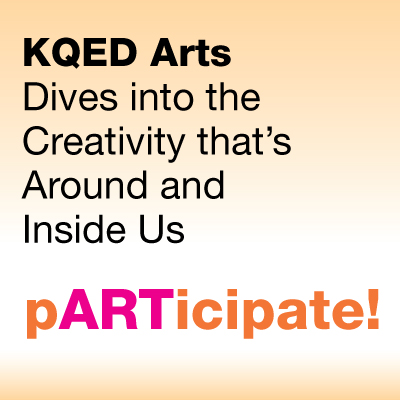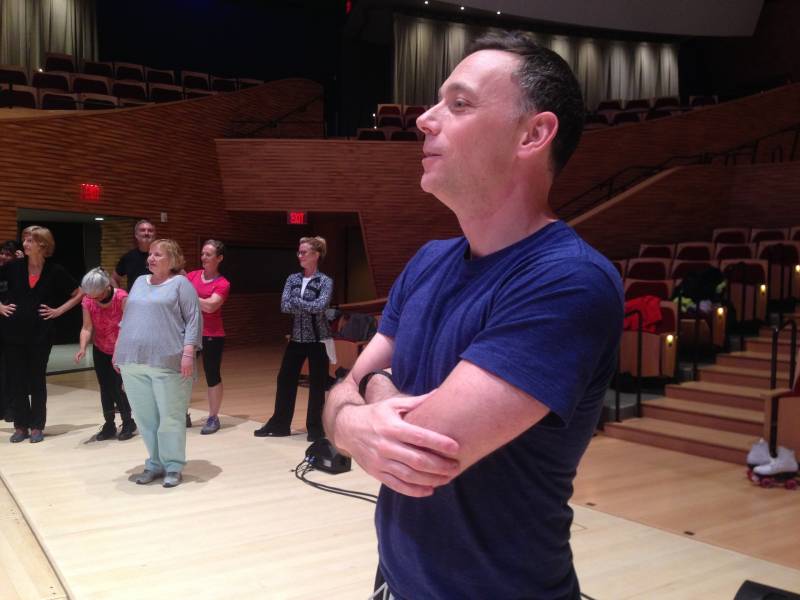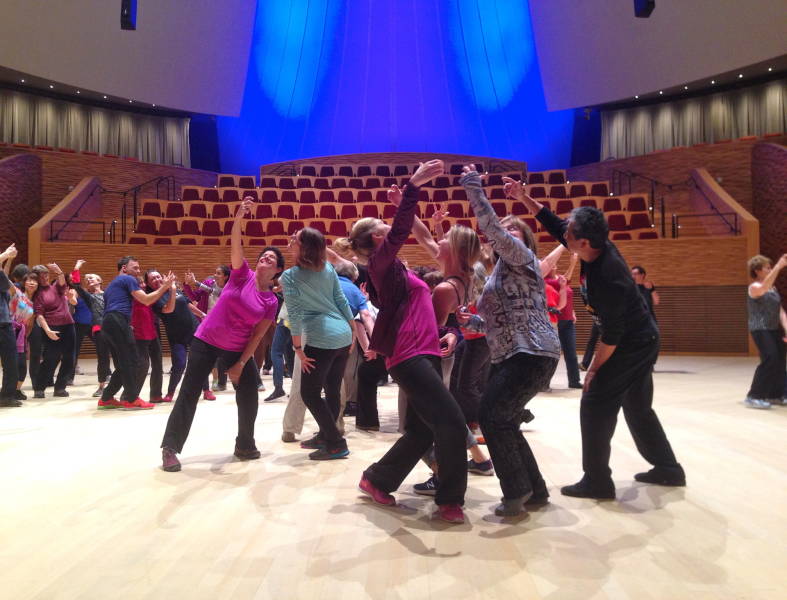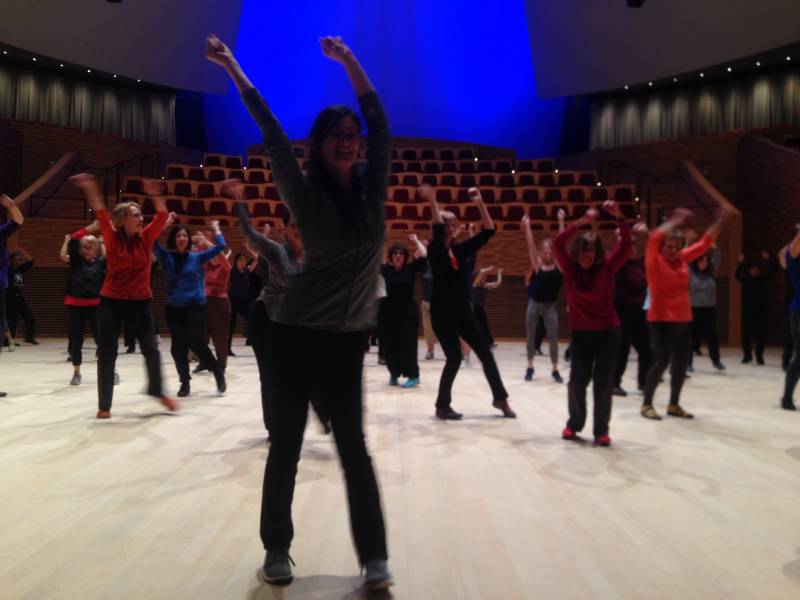 On a recent evening at Stanford, an army of amateur dancers gathered at Bing Concert Hall to rehearse for the latest version of an interactive dance work, Boléro Silicon Valley. Among their number was Stanford web developer Anne Shore, who hadn’t given a public performance in decades.
On a recent evening at Stanford, an army of amateur dancers gathered at Bing Concert Hall to rehearse for the latest version of an interactive dance work, Boléro Silicon Valley. Among their number was Stanford web developer Anne Shore, who hadn’t given a public performance in decades.
“My last performance was in the second grade, and I was a frog,” Shore said. Shore is from Ukraine originally and heavily into folk dancing. But she generally practices her art form in rec rooms, not in front of a live audience at a theater that seats more than 800 people.
Sitting in the dark is not enough
In this age of engagement, where arts lovers aren’t simply content with sitting watching pros perform in the dark, it’s often not enough for dance companies to merely put on a show; they’re sometimes inviting audience members to join in on stage. The trend for audience participation in professional arts endeavors is growing, and the event at Stanford is no exception.
New York choreographer Larry Keigwin began pairing civilians with Maurice Ravel’s famous orchestral piece Boléro nearly 10 years ago. He’s since mounted some version of the production all over the country, such as in Santa Barbara and Denver.

Keigwin picked Boléro as the music for this project because the work is so well known and because it builds slowly and steadily over 15 minutes, culminating in a big, satisfying finish. “Boléro is fascinating, because it is, in essence, repetitive,” said Katrina Hong, a staff researcher at Stanford medical school and participant in the production. “But it’s so intricate, and it develops over time and picks up the pace a little bit and just, it’s intense.”
Keigwin also said Boléro also lends itself to just about any staging idea. For each production of the piece, Keigwin has developed the choreography on site, choosing simple moves likely to resonate with the local audience. “Celebrating the local community with real participants from the community,” Keigwin said. “So we create it with them, for them, and about them.”



